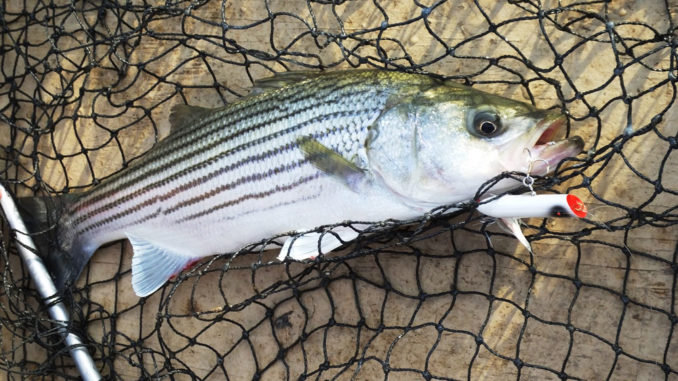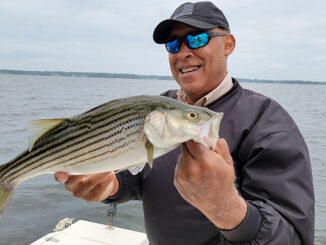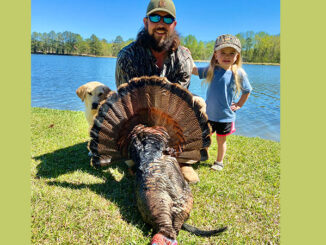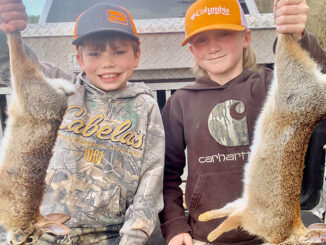
Chuck Porter of Sumter, S.C., has been fishing Lake Wateree for 30 years and has seen the striper action ebb and flow.
“We’re definitely on an upswing right now, and despite the high heat and humidity of August, summer can be a very good time of the year for schooling action,” Porter said. “It doesn’t happen every day but enough that’s it pays to be prepared. I’ve found early and late in the day are peak times to potentially have stripers herding shad to the surface and feeding on them. My favorite time is an overcast morning with a light rain falling. Even though stripers are surface feeding, the action doesn’t necessarily take place in shallow water.”
Porter said stripers will herd shad to the surface and may be surface feeding in 30 feet or more of water. But shallow-water lures are still the key to catching actively schooling fish, and a topwater lure or bucktail worked just under the surface are excellent choices. He’ll also use a ¼- to ½-ounce jigging spoon and let it fall a bit deeper in hopes of hooking larger fish. The spoon is also very effective when stripers stop feeding at the surface but are still marked on the graph under the boat.
“They will herd shad onto a point or a shallow hump surrounded by deeper water,” he said. “When I see stripers breaking on the surface, I approach them quickly, but I can usually determine a direction of movement and will position the boat just ahead of them. I never motor full speed right on top of the schooling fish. That will spook and scatter the fish ending the topwater action. I’ll use the electric motor to stay in contact with the school until they move on.
“On cloudy or drizzling-rain mornings, stripers often surface again only a few hundred yards away, and I’ve been able stay on schooling fish all morning.





Be the first to comment